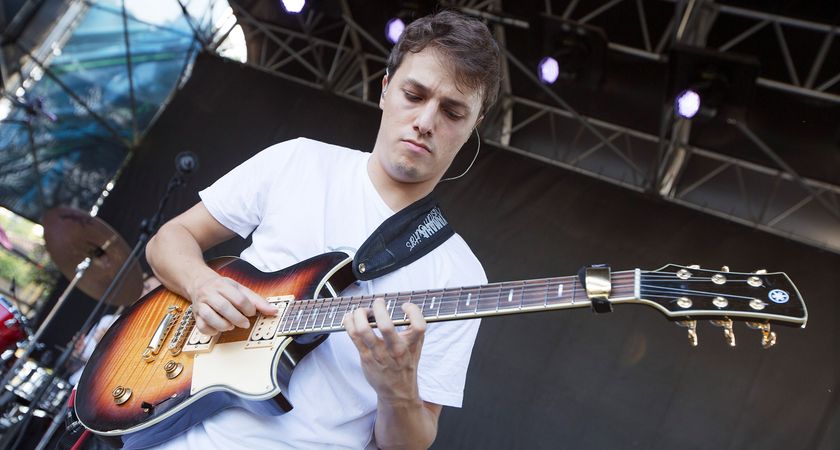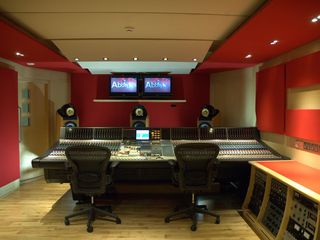
Studio Two control room
Abbey Road is the oldest and easily the most famous recording facility in the world. Opened by the composer Sir Edward Elgar in the ‘30s and frequented by some band from Liverpool throughout the ‘60s, over the years Abbey Road has played host to innumerable legendary bands, major classical recordings and some of the most high-profile film scores in Hollywood history.
At the centre of the complex, which is housed in a converted Georgian townhouse in North-West London, is the legendary Studio Two. The room is best known for being the space in which the Beatles recorded almost all of their releases, but has also been used by the likes of Pink Floyd, Radiohead, Oasis and Kate Bush.
Following a high-profile campaign last year to prevent the studios’ sale by parent company EMI, Abbey Road has started 2011 by refurbishing Studio Two’s control room, adding a new desk in the process.
Studio Two today
Last week MusicRadar paid a visit to take a look around the new control room and chat to Director Of Engineers Peter Cobbin and recording engineer Jonathan Allen:
“It’s obviously an iconic rock and roll band studio, but we’ve also been quietly using it for a lot of film scores for years,” Peter explains. “The quality of the live rooms is just fantastic, and while we’re lucky to have a facility like Studio One, which lends itself to large scale film scores, a lot of composers like the drier more intimate sound that you can achieve in Studio Two.
“We’re capable of having 50 or 60 musicians in here. Personally, if someone said to me that they want a really intimate string recording, then this room is unbelievable.
A room with character
“The live room itself hasn’t changed since it opened, which highlights how flexible it is,” Peter continues. “These studios are the oldest purpose built studios in the world, and when they were built, the technology really wasn’t up here [in the control room], it was down there - in the design of the rooms themselves.
“Studio One’s technical specification is an acoustic recording hall but this [Studio Two] was really designed for the big band era. There are stereo recordings that exist from 1932 of big bands performing in here.
“Come 1962, this band with four guys comes into the room to do their demos, then hog the studio for the next eight years. Obviously we do refer to it as The Beatles’ room, because it’s become iconic in everyone’s minds because of the history of the place. But the fact is, it was a versatile recording studio 30 years before The Beatles existed.”
“You don’t want to change characters,” Jonathan adds. “Anyone can treat an acoustic to make it different, but if you’ve got a friend who’s a great character you wouldn’t want to change them, that’s just who they are. And this is a similar idea.”
Studio Two control room in pictures: The desk

The desk
Jonathan: “We initially installed a Neve 88RS in Studio One a couple of years ago when we did a big refurbishment.
“Fortunately, we still live in the analogue world, which we feel is essential for what we do. But in order to expand recording facilities, and as we’re working on film scores, we need to be working in a surround capacity.
“This not only upgrades our old desk, but also, with the upgrades that Neve have made within the mic amps and the signal paths, alongside a ridiculously comprehensive monitoring facility, allows us to monitor lots of different stems at the same time.
“It’s great to get the Neve in here - it sounds bang-on and complements all the other gear. It’s bizarre hearing this desk in here now, having got used to it in Studio One; it does have a terrific effect.”
Peter: “Before there was SSL and Neve, EMI made all the equipment for the studio. We’ve retained a lot of the old gear and like anything vintage, if it was good in its day, chances are it’s not only going to sound great today but it’s going to have a lot of character.
“So we use the old desks as sidecars and pull them into the studio when we want to use them. I recorded a whole film score through one of those; they can really complement the newer gear.”
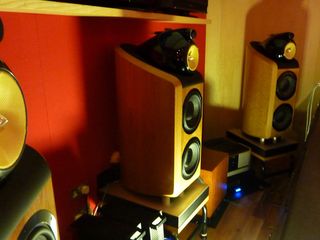
Montiors
Peter: “These are called B&W 800 Diamond Series Mk IIs.
"As with Neve, we have a good relationship with B&W, an English speaker manufacturer, and we’ve had a hand in tests and tweaking the design of these. We’ve found these to be probably the most consistent monitors for referencing with the work that we do.
"We also have ceiling-mounted B&W speakers for 5.1 [surround sound] monitoring."
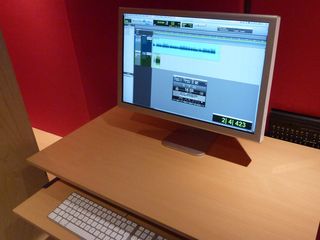
Software
Peter: “We have Prism [ADA-8] interfaces and converters running into Pro Tools - probably 90% of the work we do is all on there.
“It’s become the standard format, you can imagine the file sending that goes on between here, LA and the rest of the world. That came quite a while ago and for us the issue wasn’t so much the software but the sound quality of the interfaces.
“We were really appreciative, at the time, that Prism reverse engineered these interfaces to work with Pro Tools.
“We’ve also recently purchased this CLASP system. The idea is that it uses a tape machine to record in to Pro Tools. It controls the tape machine, works out the time delay and automatically compensates for it - so it’s just a very elegant way to record genuine analogue.”
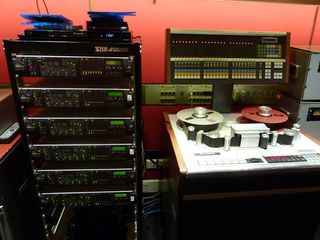
Outboard gear
Peter: “In the old days there was always a wall separating the control room from the tape op area, to cut out all the machine noise when you were tracking.
"As time went on that was replaced by a movable wall, but this is the first time that it’s been done away with completely. Machine noise isn’t so much of an issue as it used to be.
"These days there’s all sorts of exciting possibilities to really take advantage of our analogue heritage, and that's something we’re really proud of. We have the best microphone collection in the world, great preamps, and new desks. But we're integrating it to the real world, which is now digital, so we’ve probably got more Pro Tools systems than anyone else too."
Like this? Now read: Studios of the pros: stars' recording setups in pictures
Connect with MusicRadar: via Twitter, Facebook and YouTube
Get MusicRadar straight to your inbox: Sign up for the free weekly newsletter
I'm the Managing Editor of Music Technology at MusicRadar and former Editor-in-Chief of Future Music, Computer Music and Electronic Musician. I've been messing around with music tech in various forms for over two decades. I've also spent the last 10 years forgetting how to play guitar. Find me in the chillout room at raves complaining that it's past my bedtime.

"A classic compressor for free on Valentine's Day – it must be love!": Universal Audio is giving away an 1176 plugin as a Valentine's gift - here's how to get it and use it
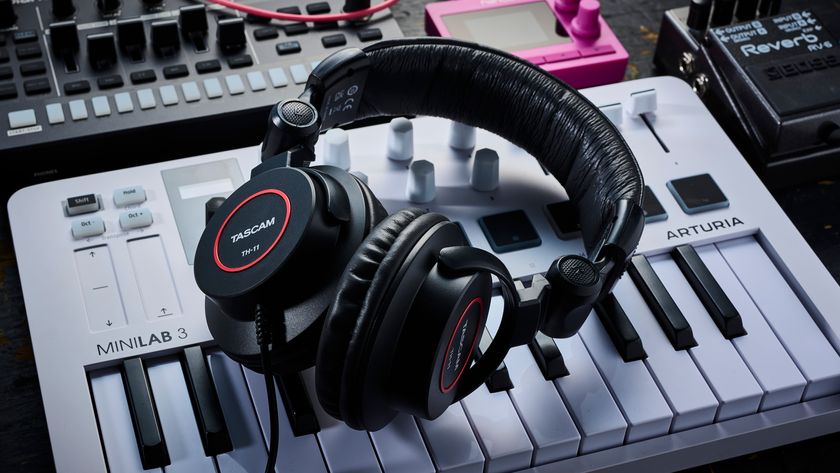
“A well-made and affordable headphone that is light, comfortable and a reliable choice for studio recording”: Tascam TH-11 review

"A classic compressor for free on Valentine's Day – it must be love!": Universal Audio is giving away an 1176 plugin as a Valentine's gift - here's how to get it and use it

“A well-made and affordable headphone that is light, comfortable and a reliable choice for studio recording”: Tascam TH-11 review
Most Popular







